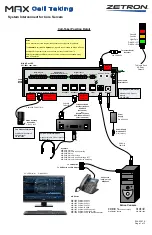
QSEVEN-Q7ALx2 - Preliminary User Guide, Rev. 0.7
// 31
5.8.5.1.
Power Supply Control and Management Signals
Power supply control settings are set in the BIOS setup menus and enable the module to shut down, rest and wake
from standby.
Table 7: Power Supply Control and Management Signals
Signal
Pin
Description
PWRBTN#
20
Power button: this signal is a low active input and triggered on the falling edge.
PWGIN#
26
Power good input: this high active input for the Qseven® module indicates that all
power rails located on the carrier board are ready for use.
RSTBTN#
28
Reset button: this input may be driven active low by external circuitry to reset the
Qseven® module.
BATLOW#
27
Battery low: this signal may be driven active low by external circuitry to signal that the
system battery is low or may be used to signal some other external battery
management event.
Wake#
17
Wake Event: this may be driven active low by external circuitry to signal an external
wake-up event.
SUS_S3#
18
S3 State: this signal shuts off power to all runtime system components that are not
maintained during S3 (Suspend to Ram), S4 or S5 states. The signal SUS_S3# is
necessary in order to support the optional S3 cold power state.
SUS_S5#
16
S5 State: This signal indicates S4 or S5 (Soft Off) state.
SLP_BTN#
21
Sleep button: this low active signal transitions the module into the sleep state or to
wake up the system up. This signal is triggered on falling edge. (Pin shared with GPIO)
LID_BTN#
22
LID button: this low active signal detects a LID switch and brings the module into the
sleep state or wakes up the module again. Open/Close state may be software
configurable. (Pin shared with GPIO)
The SUS_S3# signal must be able to enable the carrier board’s power rails generated out of
the VCC power rail.
















































